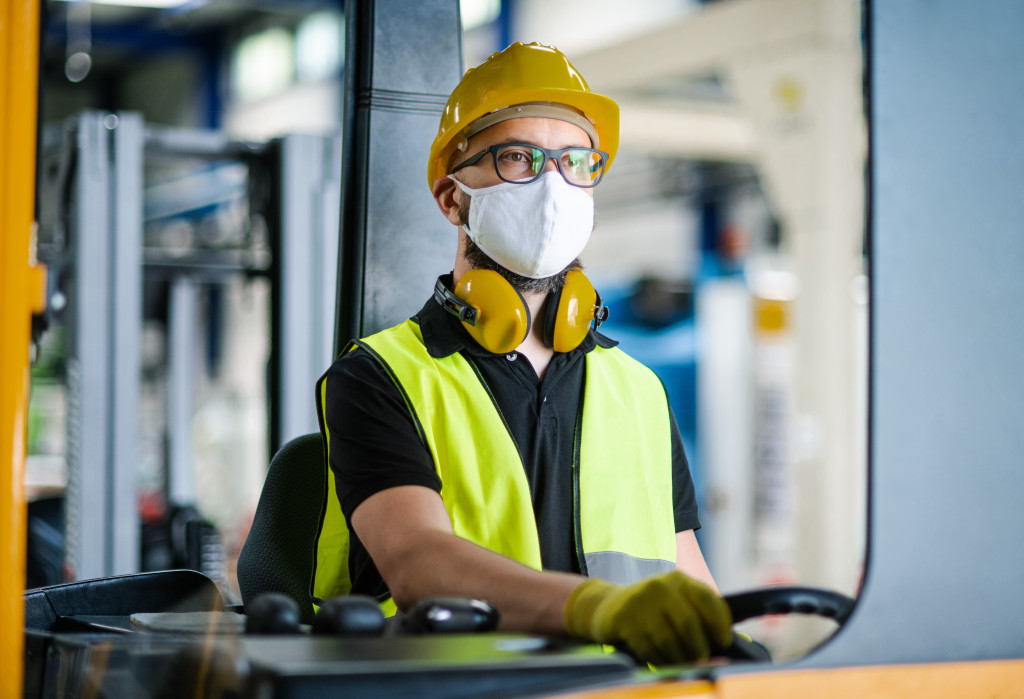The manufacturing industry is one of the most important sectors of the economy, but it’s also one of the most dangerous. In 2021, there were 1,062,700 nonfatal injuries and illnesses in the manufacturing industry. Workers in factories are at risk of injury from a variety of hazards, including heavy machinery, toxic chemicals, and repetitive motion. That’s why it’s so important for companies in the manufacturing industry to implement different controls and policies for risk and hazard mitigation. If you’ve only started expanding your small business to become a small manufacturing company, here are the things you should know:
1. Avoid Unnecessarily Risky Activities and Substances
This first tip seems simple, but it can also be the hardest to implement; after all, there are a lot of risky activities and substances in the manufacturing industry. As it stands, however, this is the highest in the hierarchy of control: elimination. You cannot be at risk if you eliminate the hazard.
Before using a hazardous substance or integrating a risk procedure in your workflow, you should first evaluate it and see whether it is worth the risk. If it can regularly cause a severe issue that will be too hard to resolve and compensate, you will be better off avoiding it altogether. On the other hand, you can also do the next best thing: substitution.
2. Choose Safer Alternatives
On the hierarchy of control, substitution is the second level. Substitution is the use of a safer alternative to a hazardous substance or activity. When you substitute, you are still using the same basic process, but you are using a safer option. For example, you might use a less toxic chemical in place of a more toxic one. Or you might use a slower and less dangerous machine instead of a faster and more dangerous one.
Substitution is important because it can help to mitigate risk without sacrificing productivity. It also allows companies to stay compliant with safety regulations. By choosing safer alternatives, companies can avoid costly fines and keep their workers safe.
Nevertheless, many companies will still choose to accept and mitigate a risk simply because it can be profitable. In that case, there are still other things that can be done about it.
3. Invest in Safety Equipment for the Facility
One of the most important ways to keep your workforce safe in a manufacturing facility is to invest in safety equipment. This includes things like guard rails to prevent people from falling, shields to protect them from moving parts, air filtration systems to remove toxic fumes, and sprinklers to put out fires. In particular, air quality is an aspect that companies should be mindful of, as factories are enclosed spaces in which poor air quality can swiftly cause long-term illnesses and death.
It’s important to choose the right type of safety equipment for your specific facility. For example, if you have a lot of machines that produce sparks, you’ll need fire extinguishers and sprinklers. If there are a lot of toxic chemicals in the air, you’ll need industrial air filters for your compressors and ventilation. In areas where people can fall, you’ll need guard rails and safety nets. You will also need shields for exposed moving parts that can pinch, squeeze, or cut people, such as exposed gears, conveyor belts, grinders, or saws.
It’s also important to make sure that the safety equipment is properly installed and maintained. Employees should be trained on how to use the safety equipment properly, and it should be inspected regularly to make sure it’s working properly. This way, you can implement proper engineering controls for your facility.

4. Develop Comprehensive Safety Policies and Procedures
Administrative controls are the next level of safety mitigation after engineering controls. Administrative controls are policies and procedures that are put in place to prevent accidents and injuries. They might include things like safety training and safe work practices.
Administrative controls are important because they help to create a culture of safety in the workplace. When employees know what is expected of them and know how to safely do their job, they are less likely to get injured. In addition, administrative controls can help to enforce safety regulations. By having policies and procedures in place, companies can prove that they are taking steps to keep their workers safe. Even though this is quite low on the hierarchy of control, it’s still an important part of the overall safety program.
As an example, one of the most common hazards in a factory is the danger of becoming trapped in machinery. In order to mitigate this risk, companies can implement administrative controls such as prohibiting people from wearing loose clothing or having long hair. They can also make it an official part of the operational checklist to visually inspect all parts of the machine where people can get caught before starting operation.
Workplace Inspection
Another key step is to regularly inspect the workplace for hazards. This can be done through formal audits or simply by walking around the facility on a regular basis. Any hazards that are found should be promptly addressed. This works best with developed checklists and communication systems in place.
Safety Training
Factory workers need to be properly trained in order to safely operate the machinery in their workplace. This includes learning how to use the safety equipment properly and knowing what to do in the event of an emergency.
Factory workers should be trained on the company’s safety policies and procedures. They should also be trained on how to recognize and respond to hazards in the workplace. This includes things like knowing how to spot a fire, knowing where the emergency exits are, and knowing how to shut down the machinery safely.
It’s also important for workers to be aware of the risks associated with their job. For example, workers who operate machines that produce sparks need to know how to stay safe around those machines. Workers who work with toxic chemicals need to know how to avoid exposure.
Safety training should be ongoing, and it should be updated as necessary. Employees should be retrained whenever there is a change in the workplace, such as when new safety equipment is installed or when a new hazard is introduced.
5. Get PPE for Your Workforce
PPE stands for personal protective equipment, and it’s one of the most important ways to keep workers safe in a manufacturing facility. Some common types of PPE in factories include:
- Hard hats: Hard hats are essential for protecting workers’ heads from falling objects or debris.
- Safety goggles: Safety goggles protect workers’ eyes from flying particles and dust, as well as chemical splashes and sparks.
- Gloves: Gloves protect workers’ hands from cuts, abrasions, burns, shocks, and contact with hazardous materials.
- Ear plugs: Ear plugs protect workers’ ears from loud noises that can cause hearing loss.
- Face shields and goggles: Face shields protect workers’ faces from flying particles, dust, chemicals, and sparks.
- Masks: Breathing masks come in a variety of types, and some can protect against solid particles, such as dust and fumes, while others protect against gases and vapors. In a manufacturing facility, it’s important to have masks that protect against both solids and gases, since there can be both solid and gas hazards present.
Each of these safety measures are important in their own way, and it’s important to implement as many of them as possible in your factory. By doing so, you can create a safe working environment for your employees and reduce the risk of injuries or fatalities.
Final Thoughts
Making sure your manufacturing workforce is safe doesn’t have to be complicated. By avoiding unnecessarily risky activities and substances, choosing safer alternatives when possible, and investing in safety equipment for the facility, you can go a long way in mitigating risk. Additionally, developing comprehensive safety policies and procedures, as well as providing PPE for your workforce are essential to maintaining a safe environment. Have you taken steps to ensure the safety of your employees? Let us know in the comments below.



